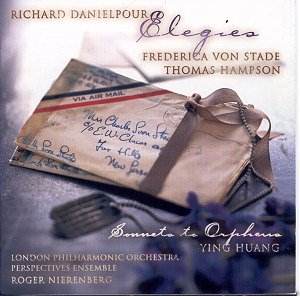 VIVALDI: Juditha Triumphans
VIVALDI: Juditha Triumphans
Recording Details:
Antonio VIVALDI (1678 – 1741)
Juditha Triumphans (1716)
Magdalena Kožena, mezzo-soprano (Juditha)
Maria José Trullu, contralto (Holofernes)
Marina Comparato, soprano (Vagaus)
Anke Herrmann, mezzo-soprano (Abra)
Tiziana Carraro, mezzo-soprano (Ozias)
Conductor: Alessandro de Marchi
Recording Date: October 2000
Label: OPUS 111 OP 30314 [3 CDs: 165.30]
Academia Montis Regalis, Chamber Choir of the National Academy of Santa Cecilia
In the pantheon of Baroque music, Vivaldi’s Juditha Triumphans emerges not merely as an oratorio but as a resplendent testimony to the composer’s innovative spirit and the rich musical culture of early 18th-century Venice. This recording, conducted by Alessandro de Marchi and featuring the formidable talents of the Academia Montis Regalis and the Chamber Choir of the National Academy of Santa Cecilia, represents a significant milestone in the revival of this neglected masterpiece.
Vivaldi’s Juditha Triumphans was composed in 1716, during his tenure at the Ospedale della Pietà, where the composer crafted works that not only showcased the remarkable capabilities of the young female musicians but also reflected the sociopolitical climate of his time. The oratorio, subtitled sacrum militare oratorium, serves as a celebration of Venice’s military victories over the Ottoman Empire, utilizing the Biblical narrative of Judith’s beheading of Holofernes as a compelling metaphor for triumph against tyranny. In this context, the choice to cast all roles with female voices imbues the work with a nuanced interpretation that challenges traditional gender roles of the Baroque period, creating a performance that resonates with contemporary audiences.
De Marchi’s conducting is marked by a deft balance of passion and precision, managing to draw out the emotional depth of the score while maintaining clarity and transparency among the instrumental textures. The original instrument orchestra contributes a vibrant authenticity to the performance, allowing Vivaldi’s intricate orchestration—characterized by its interplay between strings, woodwinds, and continuo—to emerge with a fresh sonic brilliance. The delicate lutenist accompaniments, particularly in the arias for Judith, breathe life into the melodic lines, allowing them to unfold with a lyrical grace that is quintessentially Vivaldian.
Magdalena Kožena’s portrayal of Judith is nothing short of revelatory. Her creamy tone, combined with remarkable agility, renders the character’s emotional journey with striking clarity. In the aria “Veni, me sequere fida,” Kožena’s nuanced phrasing and expressive dynamics transport the listener, effectively conveying both the seductive allure and the underlying strength of Judith. The delicate chalumeau—an early woodwind akin to the clarinet—provides a sumptuous layer to this aria, enhancing its lyrical beauty. This performance stands as a notable comparison to other interpretations, such as that of Ann Hallenberg, whose robust vocal presence also captures Judith’s duality but with a more dramatic flair.
The supporting cast is equally commendable, each singer adeptly fulfilling their roles with a level of artistry that complements Kožena’s lead. Maria José Trullu’s Holofernes resonates with a rich contralto timbre that evokes both menace and vulnerability, while Marina Comparato’s portrayal of Vagaus showcases remarkable coloratura agility, particularly in passages requiring rapid ornamentation. Anke Herrmann, as Abra, delivers her lines with a mix of ferocity and finesse, and Tiziana Carraro’s Ozias brings a gravitas befitting the high priest’s role, her dark timbre blending seamlessly with the ensemble.
The recording quality merits special mention, with the engineering capturing the nuances of both the vocal and instrumental forces. The acoustic space of the Instituto de Musica Antica in Mondovi provides an intimate yet resonant backdrop, allowing the intricate dialogues between voices and instruments to flourish without muddiness. The booklet accompanying the recording includes informative essays, notably one by de Marchi, which elucidates the historical context and performance considerations that he navigated in preparing this work.
In conclusion, Juditha Triumphans stands as a testament to Vivaldi’s genius and the vibrant musical environment of his time. This recording not only revitalizes an essential work of the Baroque repertoire but also underscores the significance of female voices in the interpretation of historical narratives. The confluence of Kožena’s exquisite performance, de Marchi’s insightful conducting, and the ensemble’s cohesive artistry renders this interpretation a compelling and essential addition to the canon of Vivaldi recordings. It invites both seasoned listeners and newcomers alike to appreciate the depth and grandeur of this monumental oratorio, solidifying its place among the great masterpieces of Baroque music.



